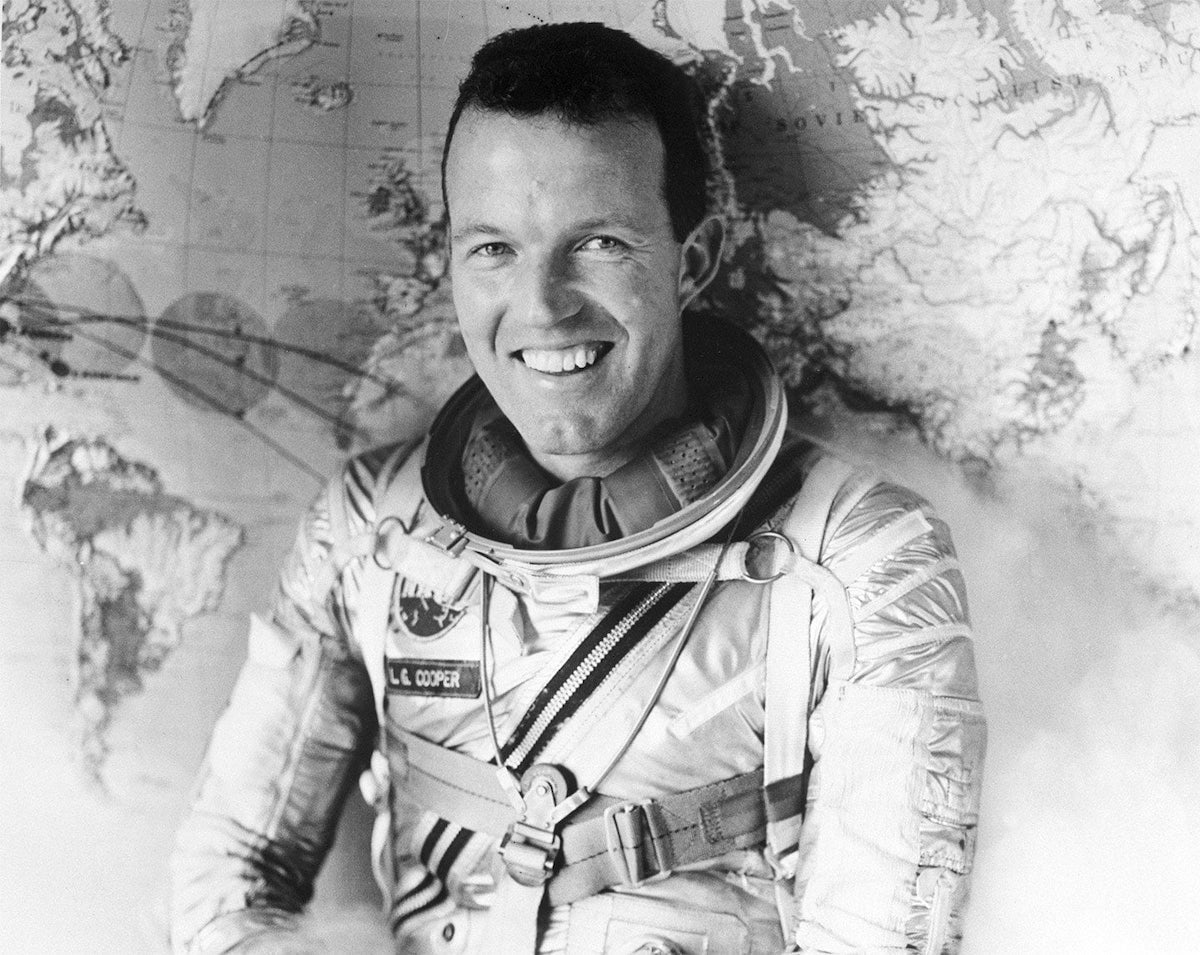The Greatest Pilot Anyone had ever Seen
Leroy Gordon “Gordo” Cooper Jr. was born on March 6th, 1927, in Shawnee, Oklahoma, the only child of Leroy Gordon Cooper Sr. and his wife Hattie. Cooper’s exposure to aviation began early as his parents were owners of a Command-Aire 3C3 biplane, which little Cooper learned to fly at a young age. Unofficially soloed at the age of 12, and earned his pilot's license in a Piper Cub when he was 16.
While living in Hawaii with his parents, and attending the University of Hawaii, Cooper bought his own J-3 Cub airplane and joined a local flying club. It was there that Cooper met his future wife, Trudy B. Olson, the only wife of a Mercury astronaut to have a private pilot license. They were married on August 29, 1947, in Honolulu.
Cooper received his initial flight training at Perrin Air Force Base, Texas and Williams Air Force Base, Arizona, in the T-6 Texan, and on completion of his training in 1950, Cooper was posted to Landstuhl Air Base, West Germany, where he flew F-84 Thunderjets and F-86 Sabres. Returning to the United States in 1954, Cooper began studies at the U.S. Air Force Institute of Technology (AFIT) in Ohio, where he completed his Bachelor of Science in Aerospace Engineering on August 28, 1956.
While at AFIT, Cooper became friends with a fellow USAF officer. The two were later involved in an accident during takeoff from Lowry Field on June 23rd, 1956 when their Lockheed T-33 that Cooper was piloting suddenly lost all power during the takeoff roll. Gordo attempted to abort the takeoff, but the main gear collapsed sending the aircraft careening across the airfield for over 2,000 feet, crashing at the end of the runway, before finally bursting into flames. Thankfully, Cooper and his friend Virgil Grissom escaped completely unscathed from the burning wreckage.
.

Both Cooper and Grissom went on to attend the USAF Experimental Flight Test Pilot School (Class 56D) at Edwards Air Force Base in California in 1956. After graduation Cooper was posted to the Flight Test Engineering Division at Edwards, where he served as a test pilot and project manager, testing the F-102A and F-106B, flying the T-28, T-37, F-86, F-100 and F-104 aircraft. By the time he left Edwards, he had logged more than 2,000 hours of flight time.
April 9th, 1959: Gordo was introduced to the nation as part of the Mercury Seven Astronauts, along with Scott Carpenter, John Glenn, Gus Grissom, Wally Schirra, Alan Shepard, and Deke Slayton.
.

.
Gordo’s chance of reaching orbit was put into jeopardy by his own actions when one fine day he took it upon himself to buzz Hangar S at Cape Canaveral in a Convair F-102 Delta Dagger with full afterburners selected…this was evidently frowned upon by the higher-ups, and according to Cooper, Deke Slayton told him that President John F. Kennedy himself had intervened to prevent his removal from the program.
On May 14th, 1963 Leroy Gordon “Gordo” Cooper Jr. boarded the Faith 7 as she sat at Cape Canaveral Air Force Station Launch Complex 14. It was there that he found a little gift that had been left for him...
Fellow Mercury astronaut Alan Shepard, knowing that Cooper would have a new version of the urine containment device that Shepard lacked on his Mercury-Redstone 3 flight (forcing him to relieve himself during a long countdown hold...ie: he wet his spacesuit), had left behind a toilet plunger as a joke.
Instructions on the handle said, "Remove Before Launch". Carpenter's thoughtful gift did not make the trip that day, but neither did Cooper. Various problems with radar in Bermuda, and issues with the diesel engine that rolled back the gantry, caused the entire launch to be cancelled until May 15th.
.

At 8:04:13 a.m. EST, May 15th, 1963, Faith 7 rocketed away from Launch Complex 14. At T+60 seconds, with Leroy Gordon "Gordo" Cooper Jr. American aerospace engineer, test pilot, and United States Air Force pilot at the controls. The Atlas rocket started its pitch program. Shortly afterward, passed through max Q. At T+2 minutes 14 seconds. Cooper felt Booster Engine Cutoff and staging. The two Atlas booster engines had been left behind. The Launch Escape Tower was then jettisoned. At T+3 minutes the cabin pressure sealed at 5.5 psi. Cooper reported "Faith 7 is all go"
.

"But on that glorious day in May 1963, Gordo Cooper went higher, farther, and faster than any other American. Twenty-two complete orbits around the world, he was the last American ever to go into space alone. And for a brief moment, Gordo Cooper became the greatest pilot anyone had ever seen…”












My brother Sgt Ray bryan Thomison was Grodon Cooper crew cheif for awhile I doN’ know when he was none of the family knew about until long after he passed away.If any can recall when I would appericate a text 4235512460.
Leave a comment